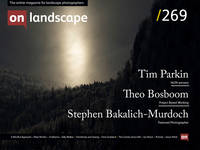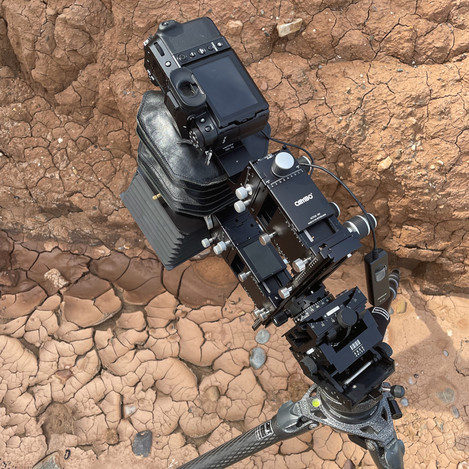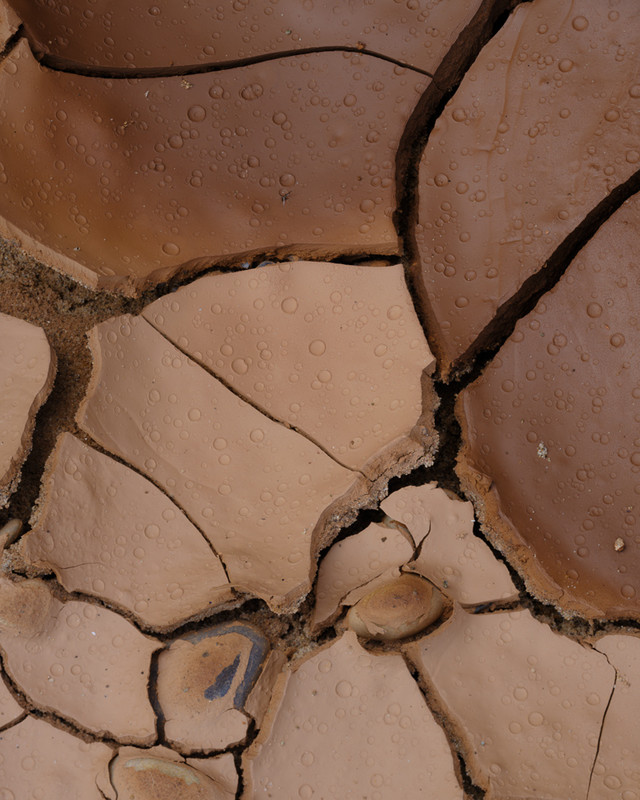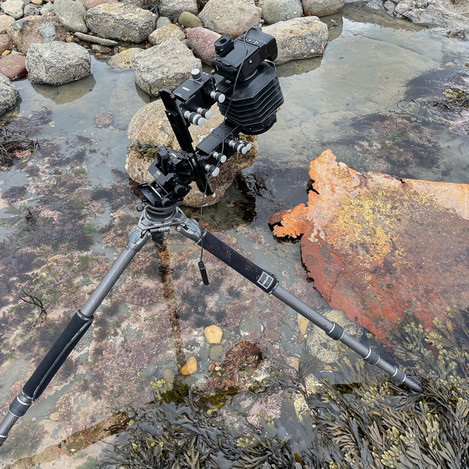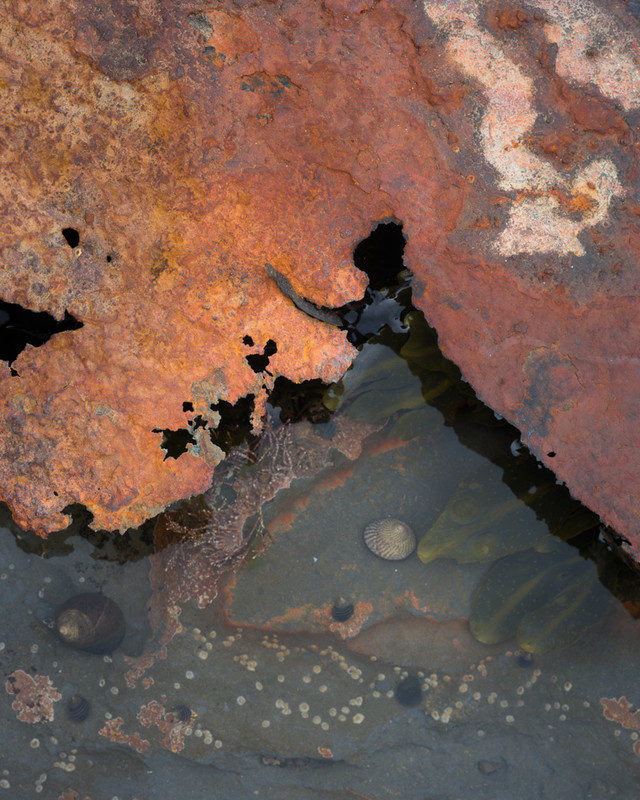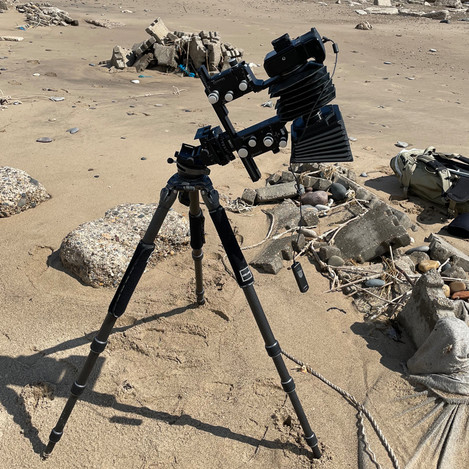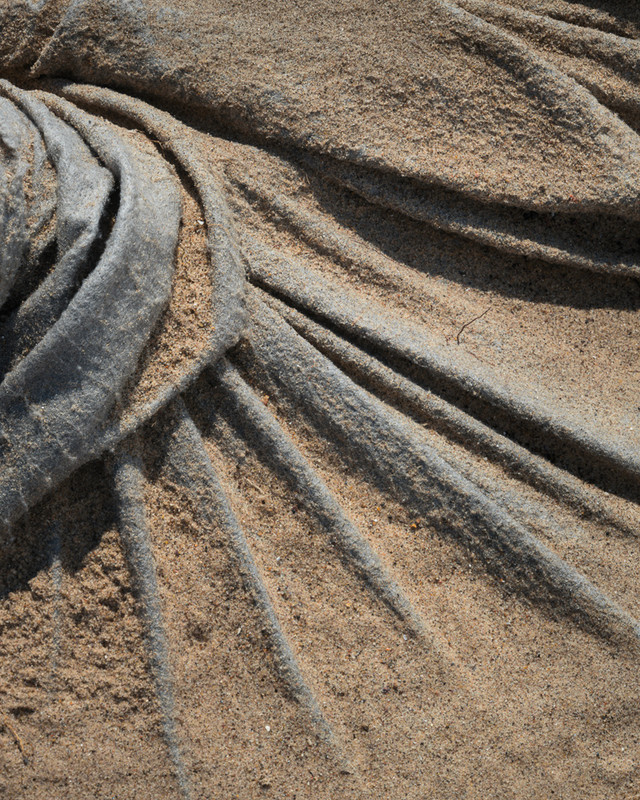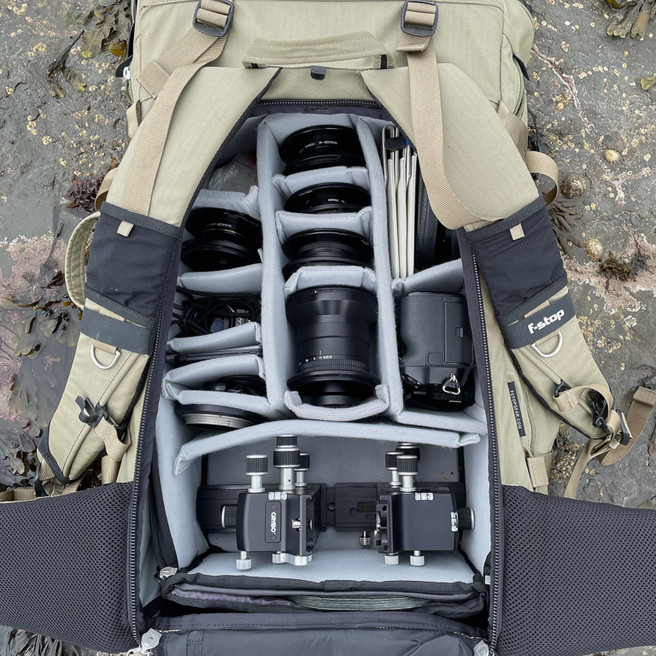Does the character of a camera change the photographs we create?

Jon Brock
As well as holding down a busy job, I am a landscape photographer in my spare time. I am based in Yorkshire, England. My photography practice has evolved over more than thirty years from 35mm film, through a long period using exclusively large format cameras and sheet film and finally transitioning to digital cameras. In terms of vision, there are two distinct sides to my work - the representational and the non representational - and I enjoy both.
“Good photographers can make strong images regardless of the camera used”
“The camera is just the tool - it’s the creativity and skill of the photographer that matters”
We see evidence of the truth of these axioms online every day with creative phone images and amazing conditions captured by small handheld cameras. But this does not mean the camera is not important, however. I would argue that there is often a symbiotic relationship that develops between a strong photographer and a particular camera. Fully understanding the strengths and limitations of a camera system and using that knowledge to inform all aspects of the creative process can lead to some of the photographer's strongest work. Besides there is a comfort that comes from handling a familiar camera that is critical to good image making. The camera becomes an extension of the body, fully aligned to the creative process rather than getting in the way.
The latter was certainly the case with me. For 13 years I made most of my landscape images with a Linhof Technikarden (TK) 5x4 camera onto transparency film. It was not an easy tool to use. Heavy, complex and a nightmare to focus in low light it required manual spot metering and an aptitude for mental arithmetic to make well exposed images, compensating for factors like the colour and tone of the spot sampled and light falloff from the use of filters, bellows extension and reciprocity failure.
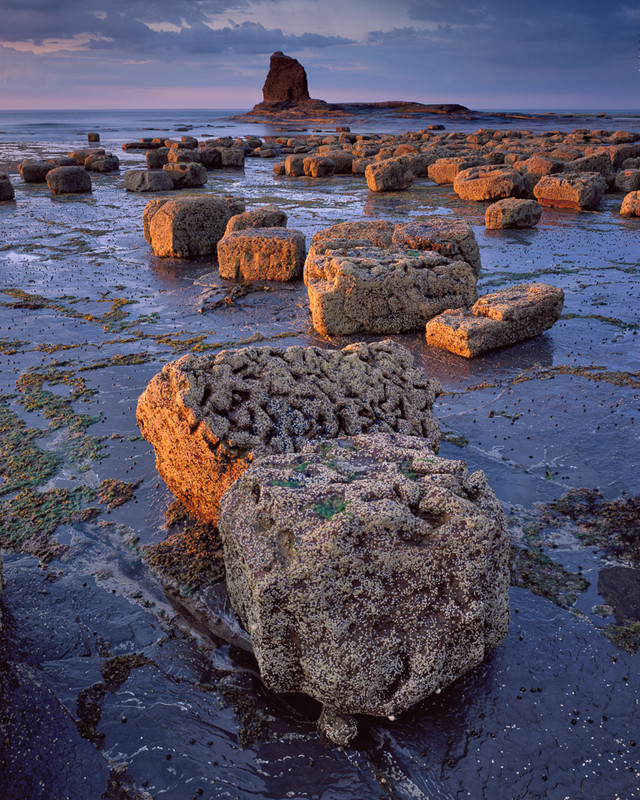
The setup time and complexity made reacting to conditions and light out of the question. It forced me to slow down and think proactively about the image, anticipating the conditions and the light (TK)
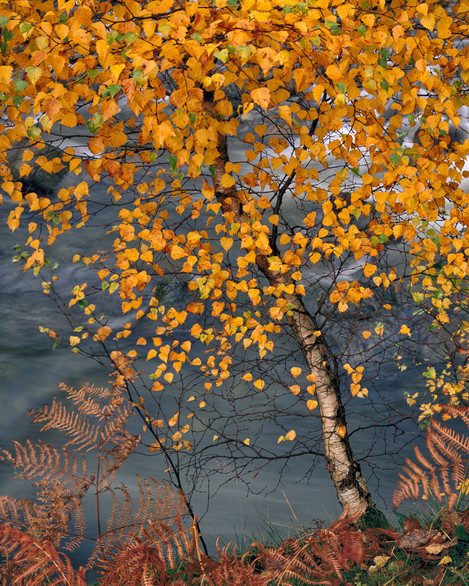
The abstracted nature of the setup (images on a view camera appear inverted on the ground glass) made one sensitive to imbalance in a composition (TK)
Yet I consistently made my strongest images with this camera. Why was that? I think there are a mixture of psychological and technical reasons. Familiarity is one factor already mentioned. But just as important was that the setup time and complexity made reacting to conditions and light out of the question. It forced me to slow down and think proactively about the image, anticipating the conditions and the light. And the abstracted nature of the setup (images on a view camera appear inverted on the ground glass) made one sensitive to imbalance in a composition.
The technical reasons can be described in one word - movements. The ability to adjust the plane of focus and control the image shape (looming the foreground or background, removing converging lines etc) in camera eventually became an integral part of my creative process. This is achieved by tilting the lens or film plane in various directions and allows the photographer to achieve visual effects that are difficult if not impossible to achieve with a standard camera.
The experience of using the TK in a photography session was meditative. The 'Yin' to the 'Yang' of everyday life. And I loved using it. I have always viewed photographing in the landscape as an opportunity to be creative and have made images that range from the representational to the abstract using whatever subject matter is to hand. The TK was integral to that creativity. Although I experimented with other camera systems and learned plenty by using them, I always came back to the TK.
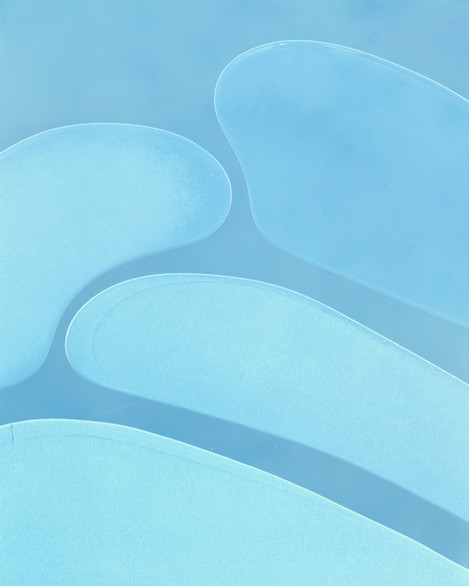
The experience of using the TK in a photography session was meditative. The 'Yin' to the 'Yang' of everyday life. (TK)
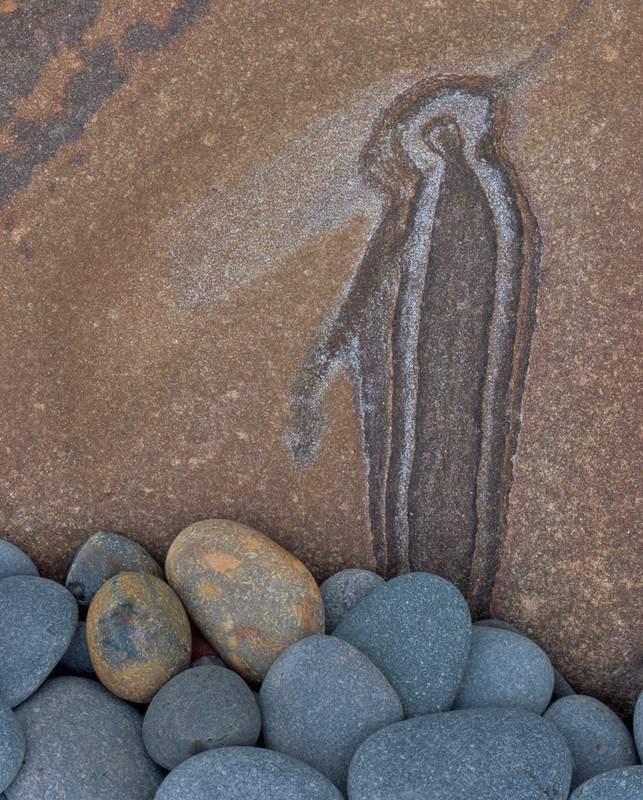
I have always viewed photographing in the landscape as an opportunity to be creative and have made images that range from the representational to the abstract using whatever subject matter is to hand. The TK was integral to that creativity (TK)
Leaving Film
When in 2017 I decided to finally abandon film and hang up my TK bellows for good, I naturally hunted for a similar digital based solution. And hunted. And hunted. I think I must have reached double figures trying to find the answer. Bolting a Sony onto the back of my TK worked for longer lenses but nothing wider than 90mm. A Pentax 645Z was nothing but frustration, unable to control focus with macro work. A Nikon 85pc lens and 35mm canon TS lens on a Sony gave me some limited tilt / shift options but a terrible experience. The same can be said for a Sony, Mirex and Contax lenses - it was so imprecise. I looked hard at a Linhof Techno but it felt like it was designed in a bygone age and would push me into using digital backs.
Eventually an interim solution appeared in late 2017 with the combination of the Fuji GFX 50S and the Cambo Actus G. Finally here was a technical camera system for mirrorless cameras with basic movements - front tilt and swing, rear shift and rear rise and fall. Initially I worked it with Hasselblad and Pentax medium format lenses but eventually switched to a combination of large format lenses (Nikon W range) in copal 0 Cambo plates and the Cambo Actus range of dedicated lenses.
Once again I had a tool that could do my bidding photographically. But it was hard to feel the love for the system. The rail length was often too short for close up work with my favourite 120mm Nikon LF macro lens. The movements were not as precise as I would like and at best a fiddle. The knobs and locks were confusing and placed inconsistently. Technically, the system lacked rear tilt. Zeroed movements felt quite random especially swing - I have lost count of how many images have accidentally applied a little swing and ended up with an image that was soft at the edges. I added the base tilts that came out in 2019 but although they helped some aspects, they added more imprecision. It all worked and was functional, but it was not an emotional replacement for a TK. And the sensor in the GFX 50s was nice but decidedly last generation. Cambo did keep making incremental improvements to the system, for example adding fine adjustment knobs which looked interesting but due to Covid I never got around to adding these to my setup.
During lockdown I worked handheld with a Sony A7RIV and 24-105mm zoom while out exercising and became addicted to the dynamic range, image stabilisation and quality of its sensor. I started using this kit in the Yorkshire Wolds once lockdown was lifted but while I enjoyed the 'Yang' of handheld work, it did not give me the 'Yin' session experience I was looking for.
The GFX 100S
Enter the GFX 100S last year and in May 2022 a brand new technical camera from Cambo - the Cambo Actus MV. The Fuji GFX 100s gave me image stabilisation and a similar sensor to the Sony A7RIV but in a larger form factor and a ratio closer to my favoured 5x4 image shape. And the 100S's EVF was a revelation. For someone with failing close focus eyesight, it makes focusing a view camera even in low light not only possible but pleasurable. The sharpness of the image made can be checked in camera using image preview mode. All a dream to one brought up on ground glass, a darkcloth and sheets of Velvia.
MV stands for Maximum Versatility. And Cambo seems to have thrown the kitchen sink at designing this technical camera. Abandoning backwards support for film, it was designed from the ground up for digital mirrorless cameras and digital backs. It has a full range of movements. Front tilt and rear tilt, front swing, front and rear shift, rise and fall. The only movement it doesn’t have is rear swing - not a big loss to be honest. It has bayonets to support Fuji, Nikon, Hasselblad, Canon and Sony mirrorless cameras as well as Phase One digital backs. Each bayonet has a rotating mechanism that allows the camera to be orientated upright or horizontal. Lens support is extensive and includes adapters for a range of medium format glass (Hasselblad, Pentax 645, Mamiya etc.) as well as copal 0/1 plates and a line-up of dedicated Actus lenses.
I got my hands on an MV as soon as I became aware of it thanks to Paula at Linhof Studio. Once it was in my hands it became clear the design owes more than a little to the inspiration behind the TK. Here is a portable (well more on that later) studio camera designed for field use. Like the TK it has a telescopic rail - extending from 140mm folded to 300mm at full extension. More rail length than I could ever need. Unconstrained macro and longer lens work was back on the agenda. The rail is Arca compatible, so it works very well with my Arca Cube.
Moreover, the movements are precise. The key movements are fully geared, butter smooth and a delight to use. The rear focus knob has a micro adjuster for fine focusing. The zeroed movements have click based detents and are clearly labelled. For the first time, at least on my copy, the zeroed swing appears to be pretty neutral. Even on my TK I had to remember to add a degree of swing to 'neutralise' the camera setup.
Details abound. For example there is a lock screw at each end of the base of the rail which stops the camera sliding down an Arca head and off to disaster. I removed the front screw to make it easy to remove the MV. All the locks are on one side and the focusing/movement knobs on the other. Great (if you are right handed). The positioning of the controls is logical and consistent. Packed away, the fall movements can be fully engaged to minimise the overall size and the standards come off the rail at the touch of a button in Arca view camera style.
The Actus system does have one technical limitation in that it cannot focus native large format lenses wider than 60mm. There is a sensible physical reason for this as there is a high risk of the lens rear element accidently smashing into the sensor (a potentially disastrous accident) and with 30-50mm distance between the lens and sensor such a setup would have very limited movements. The 35mm Pentax 645 lens is a very good wide angle option with a GFX having plenty of lens registration room and lens coverage to enable good movements. I now use the 35mm Actus lens which is based on the Contax 645 35mm Zeiss Distagon lens, arguably one of the better pieces of wide angle glass available to put in front of a camera.
If the MV has an achilles heel, it is the weight and size. Although half the weight of their previous studio camera it is 2.5x the weight of the baby Actus. Nothing compared to a 5x4 or 10x8 view camera and 5-6 film holders, it is still noticeable after a few years of not carrying such equipment. It forced me to bring my largest f stop bag back out of retirement. Quite a shock to the system.
Would the extra weight be worth it? I had a few days off work during the UK Jubilee week and took the opportunity to test out the MV extensively in the field.
The Actus MV
During Jubilee week I made it over to the Yorkshire coast several times to give the Actus MV a thorough run out - visiting Stoupe near Robin Hoods Bay and Spurn Point.
So how was it? In the field, it felt like finally coming home. A week of handling the camera and everything felt natural and very like having my TK back again but with all the advantages of digital over film. I nailed the focus and movements on all my early images helped by the greater precision and form factor over the baby Cambo Actus. No longer did the camera feel like it was getting in the way.
I surprised myself and found the weight quite manageable. The larger f stop bags have better frames and consequently are easier on the back and shoulders. I loved having the big bag back when making an image - laying all my tools out on a tray was always part of the large format experience - and the bag felt like it had 'Karma' again in a way I had not experienced for a while with smaller, cramped bags.
I have learned a few things from my Sony handheld work and now keep a tiny Fuji 35-70 zoom in the bag which I can attach natively to the GFX when I want to switch into 'Yang' mode (or switch from channelling Dylan to channelling Zebedee to use a different analogy!) This allows me to make images handheld supported by image stabilisation when I want / need to react to conditions. To my credit I only did this once throughout the week. Most of the time I worked on a tripod in full 'Yin' mode.
Photography is a lot about headspace and in the field creatively I felt inspired, emotionally I felt relaxed. I made several images during the week that I think may stand the test of time - the ultimate judge - and overall, as an experience I felt transported back to days past out with the TK at favourite places like Mulgrave.
For anyone with experience of large format film photography looking for a digital technical camera solution or for a keen digital landscape photographer looking to expand their horizons the Cambo Actus MV alongside the Arca Universalis system is a serious and credible contender. It is certainly not cheap but it is way more cost effective than a digital back based system and arguably much more flexible. I for one have found what I have been looking for.
You can see the Actus MV on LinhofStudio's website and more information on Cambo's Actus MV page.
- “Cracks” (Actus MV)
- “Shrouded by the Sea” (Actus MV)
- “The Force of Colliding Worlds” (Actus MV)
- “Mondrian in the wall” (Actus MV)
- “Early morning at Spurn Point” (Actus MV)
- “Spirals” (Actus MV)
- “Seaweed” (Actus MV)
- “Colliding Worlds #2” (Actus MV)
- “Seaweed aflame” (Actus MV)
- ‘Small Worlds’ (Actus MV)

